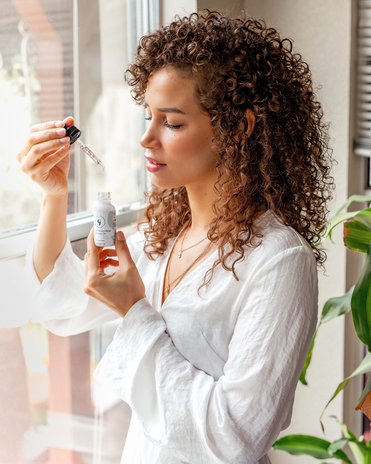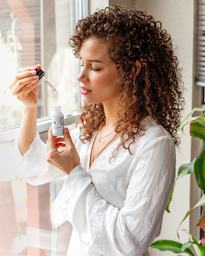I, like many of my curly haired sisters, was a dedicated follower of the Curly Girl Method when I originally transitioned to wearing my hair naturally. Like many other women with curly hair, I had no idea how to care for my hair, and the Curly Girl Method made the rules simple. It was originally introduced on a wide scale by Loraine Massey, author of The Curly Girl Handbook and founder of Devacurl. However, variations of the techniques had been used by women of color for many years.
The Curly Girl Handbook became a sort of bible for curly haired women and helped to move toward further acceptance of natural hairstyles. It has a strict set of rules about how to treat your hair, what products to use, and how to use them. Devacurl had a bit of a cult following for a time, though they have received criticism in recent years. I even wrote articles explaining and promoting ideas about ingredients that were described in The Curly Girl Handbook. But we grow, we change, and as I learn more about the origins behind the Curly Girl rules, I become more sceptical of their reasoning.
The Curly Girl Method has strict rules about how often to cleanse your hair, how to brush your hair, and restricts how much shampoo is permitted to be used. Cowashing is a very encouraged technique. Honestly, I’ve never really followed all the rules. They’re just not realistic for all hair types, the term “curly hair” encompases a huge scale of hair texture and not everything will work for everyone.
But let’s go ahead and examine some of the more specific Curly Girl Rules no-nos, the problematic ingredients, and why their restriction may not be as ironclad as presented.
Myth: The devil that is Sulfates
Sulfates are a term for a cleansing agent, the term applies to a huge range of ingredients. They’re meant to remove dirt and oil from your scalp and they do it very well.
The Curly Girl Method (CMG) claim is that sulfates are too drying for curly hair and that they are too harsh to use. The CGM recommends only using shampoos that are completely sulfate free, but this is a ridiculous oversimplification. Sulfates are not some kind of evil, toxic ingredient, they’re just cleansing agents. Can some shampoos with sulfates be too drying? Absolutely. They can also be extremely hydrating. It boils down to the shampoo formulation.
When shampoos don’t contain sulfates can you guess what they are replaced with? That’s right- a different kind of cleansing agent! Any kind of effective shampoo is going to include some kind of cleansing agent, and if the company isn’t careful with the ingredient concentrations, any cleansing agent can be too stripping. And even Curly Girl Method safe options can cause damage, as evidenced by the lawsuit that Devacurl is currently fighting.
Myth: Silicones, the devil’s second hand man
The CGM paints the use of silicones and sulfates as a vicious cycle. Sulfates dry and strip the hair and silicones create a layer on the hair to make it appear healthy. Silicones are necessary to mask the damage caused by sulfates, and sulfates are necessary to remove the layer of buildup that comes with silicones. Silicones build up on the hair, weigh it down, and prevent moisture from getting to the hair shaft.
Again, this is a wildly misleading overgeneralization. The term “silicone” encompases a huge group of molecules. The claim that they all build up is completely untrue, some silicones evaporate and some wash off with water. Silicones can act as an emollient that actually keeps moisture in. Certain kinds can be extremely effective in treating damaged hair and their ability to keep moisture out can be very helpful in fighting frizz in humidity.
Myth: Parabens, the devils shady dealer
Parabens are an ingredient that is used as a preservative in many cosmetics, the CGM claim that parabens cause cancer has no scientific backing. Parabens encompass a massive range of molecules. The ones that have been approved for use in cosmetics are actually probably safer than the newer preservatives because we have more data on them.
The theme we’re going to keep coming back to is this, you can’t single out a specific term like this and claim that everything that falls under that broadband term is necessarily unhealthy. Most of the time the health outcome from using a product is more due to the formulation than any one individual ingredient, and product formulation is fairly regulated.
We also can’t ignore how convenient it is for an author to disparage specific ingredients while simultaneously promoting her own products with their unproblematic ingredient lists. The kind of fear mongering that is utilized in villainizing these broadband product terms is also very conducive to product sales when your brand is touted as the “safe and clean” option.
All this to say, I don’t actually hate the Curly Girl method. A lot of the techniques I learned from Loraine Massey I still use everyday, and a lot of the products that I love do also happen to be Curly Girl Method approved. But, it’s good to remind ourselves that regardless of its widespread impact, The Curly Girl Handbook isn’t actually the curly bible. It’s ok to do things that the Handbook doesn’t approve of, its ok to use products that aren’t necessarily Curly Girl approved so long as they work for you. It’s all about trial and error, not everything that works for someone else is going to work for you, and despite what some people may tell you, there aren’t actually any hard and fast rules.



